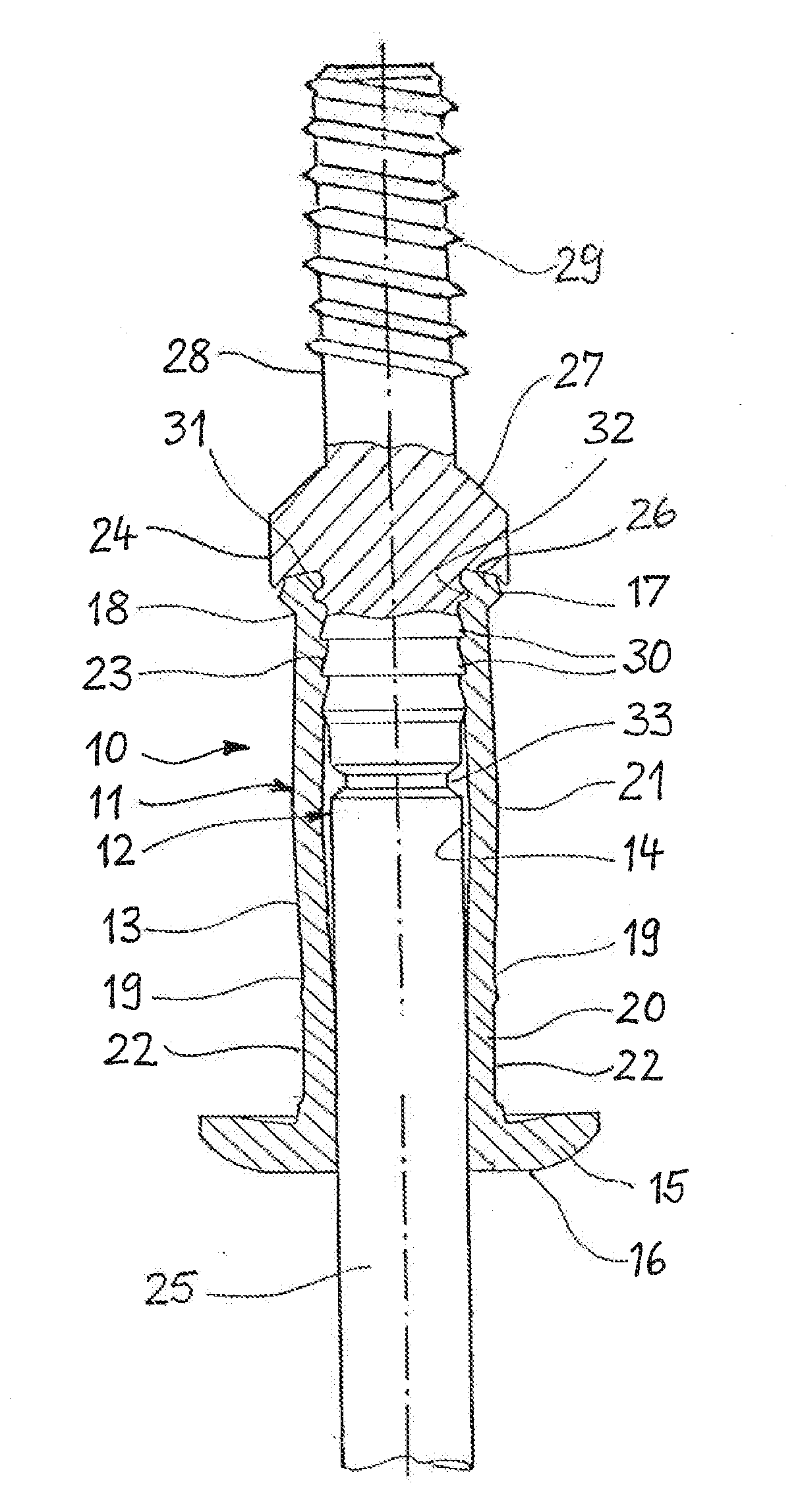Rivet stud
a technology of riveting and securing rods, applied in the direction of fastening means, screws, dowels, etc., can solve the problems of handling and installation injuries, and achieve the effect of avoiding the risk of damage to the component and injury
- Summary
- Abstract
- Description
- Claims
- Application Information
AI Technical Summary
Benefits of technology
Problems solved by technology
Method used
Image
Examples
Embodiment Construction
[0016]FIG. 1 shows a rivet stud 10, which is composed a rivet body 11 made of aluminum or steel, and a tension mandrel 12 made of steel. The rivet body 11 is mounted on the tension mandrel 12 and has an elongated shank 13 with a through-bore 14, in which the tension mandrel 12 is located. Formed at a head end of the shank 13 is a flange 15, which takes the form of an annular disk and is intended to contact a workpiece. The side of the flange 15 facing away from the shank 13 is provided with a flat support surface 16 for supporting the forward end of a riveting tool.
[0017]At its end opposite the flange 15, the shank 13 forms a foot end 17, which is set off from the shank 13 by a first constriction 18. A second constriction 19 divides the shank 13 into an essentially cylindrical first section 20 and a barrel-shaped second section 21 that curves slightly outward. On its outside, the first section 20 is provided with multiple flat indentations 22 spaced at regular intervals from one ano...
PUM
 Login to View More
Login to View More Abstract
Description
Claims
Application Information
 Login to View More
Login to View More - R&D
- Intellectual Property
- Life Sciences
- Materials
- Tech Scout
- Unparalleled Data Quality
- Higher Quality Content
- 60% Fewer Hallucinations
Browse by: Latest US Patents, China's latest patents, Technical Efficacy Thesaurus, Application Domain, Technology Topic, Popular Technical Reports.
© 2025 PatSnap. All rights reserved.Legal|Privacy policy|Modern Slavery Act Transparency Statement|Sitemap|About US| Contact US: help@patsnap.com



